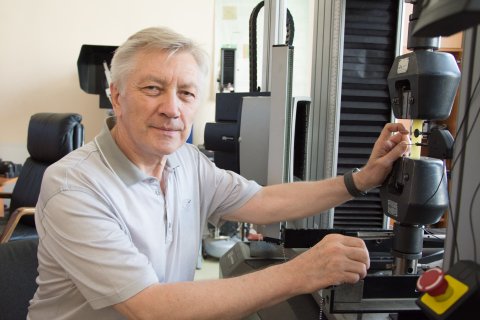The development of the aviation, space, motor vehicle industries today is difficult to imagine without the use of carbon fiber-reinforced plastics. These composite materials are widely used due to their unique properties. However, in practice, the materials are inferior to other composites in crack resistance. A scientist from South Ural State University together with Belgian colleagues demonstrated a material that is crack resistant. The research represents a recent step in solving the problem of creating crack-resistant pseudo-plastic composites. An article on the study is published in one of the most prestigious journals "Composite Structures" (Scopus Q1).
Cracks in Durable Composites
Carbon fiber composite materials have been used for decades. Their use in aviation and space is remarkably popular. In these areas, materials that are light but nevertheless possess sufficient strength are valued. Carbon fiber materials satisfy this request: they are resistant to temperature and corrosion, strong and rigid. However, they have less crack resistance than, for example, fiberglass. If you try to apply more force to a structure made of such material than it can withstand, the structure will almost instantly collapse. Therefore, it is significant for scientists who study composites to check the ability of each material to overload and determine their crack resistance.
The professor of SUSU Sergey Sapozhnikov conducted a corresponding study on a new carbon composite. This unique hybrid material was designed on the basis of ultra-high-modulus and high-strength carbon fiber. Until now, they were not united among themselves, and the topic of critical energy of crack development for such a hybrid was not covered in the scientific literature.
The work was implemented together with colleagues from the Leuven Catholic University (Belgium). Sergey Sapozhnikov created a new carbon composite from the most quality Japanese components in accordance with his theoretical developments. At the first stage, the scientists simulated a situation in which each sample of the composite had an artificial crack. To perform this, when creating composites, a thin aluminum foil was laid inside. Then this "crack" was continued to the desired length, wedging the sample. From the tests, the transversal-shear crack resistance of the material was determined. Scanning electron microscopy and microcomputer x-ray tomography were used to prove the detected intense crack resistance due to the binding effect of contacting surfaces made of various composites.
«The development of cracks is undesirable in practice because if they reach a critical length, the intact structure is destroyed. In this case, the external deformation, when a crack appears and develops, may be invisible. The tests that we have conducted are necessary in order to work in the future with carbon fiber structural elements that may have cracks. Our research provides the basis for creating pseudo-plastic composites from the studied materials with very high shear crack resistance. These are expensive, lightweight, durable materials and, to all this, almost insensitive to stress concentrators», – said Sergey Sapozhnikov.
Foundation for Further Research
Transversal-shear fracture toughness is not directly included in the design calculations. Therefore, the Professor explained, there is no direct practical application of the research. However, the team of scientists calls the work fundamental, which opens up excellent opportunities for producing modern materials with unique properties from known and relatively accessible components that do not individually possess such properties. An article on the characteristics of a new pseudo-plastic carbon fiber created by the aforementioned group of scientists is at present in print. Also, experts who have previously examined the properties of a hybrid composite under single loading intend to examine how the material will behave under cyclic loads. Put differently, the topic will be developed in the study of fatigue strength of polymer composites.
In addition, Professor Sapozhnikov, along with colleagues from Leuven, is planning to participate in the European conference and exhibition of composites. The team will present three reports on a modern type of materials — pseudo-plastic carbon fiber and their features.
Multidisciplinary research in the field of materials science is one of the three strategic directions for the development of scientific and academic activities of South Ural State University, along with the digital industry and ecology.
SUSU is a participant of the "5-100" Project, designed to increase the competitiveness of Russian universities among the world's leading research and academic centers.




